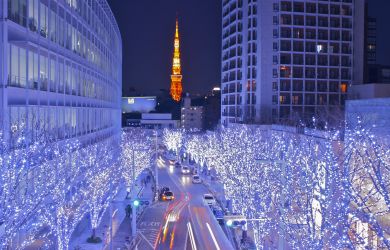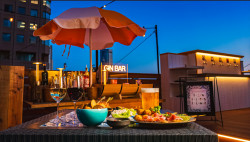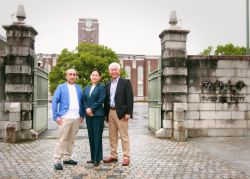
Originally published on metropolis.co.jp on November 2004

Photos by Graham Simmons
By the time Pacific Flora 2004, a floral exhibition near Hamamatsu City, closed its doors in October, thousands had visited the Gallery of World Gardens showcasing some of the world’s finest examples of horticultural design, and its superbly located grounds have now become a permanent civic park, on an island in Lake Hamana.
But Pacific Flora was more than a floral exhibition; it gave a tantalizing preview of next year’s World Expo 2005, which examines the theme of “Nature’s Wisdom,” by serving as a trial ground for some of the biggest players who will return to Nagoya next year—125 nations have committed to building pavilions at the exposition that is expected to draw 1.5 million visitors, and will span over 185 days beginning on March 25.
On a recent Chubu visit, I was privileged to take an advance peek at the Expo 2005 grounds sprawling across the municipalities of Nagakute, Toyota and Seto, in the company of Masahiko Ito, Associate PR Director for the event. Ito was keen to point out the highlights of this huge global fairground, leading me from one vantage point to another to get a panoramic perspective of the natural basin cradling the site with the agility of a fervid mountain goat. “In all, the World Expo site will cover an area of more than 170 hectares,” he said. “That’s well over three times the size of Pacific Flora.”
What has already been completed at the Expo site is impressive, though for now the site is a maze of frames made of timber, steel and aluminum. The exposition’s centerpiece will be the Global Loop, a 2.6km-long boardwalk complete with a tram for the elderly, disabled or just plain lazy.

Around the Global Loop, the 125 national exhibition spaces will be grouped into six “common” areas, each featuring a different continent. The Common One area highlights central and northern Asia, while the pavilions (including the Australian pavilion) will be housed in Common Six. The other common areas will be the Americas (2), the Middle East and nine European countries (3), the rest of Europe (4), Africa (5), and Oceania and Southeast Asia (6).
Outside the Global Loop, the Forest Experience Zone takes up nearly half the site. “This is the place to rediscover the intimate relationship between humanity and nature,” goes the publicity blurb. And on a sweltering summer afternoon in central Japan, perhaps the most inviting area could be the chain of ponds and lakes crisscrossing this zone.
Back in Nagoya, I took some time to explore the attractions of this fascinating city, a smaller and less pressure-cooked version of Tokyo. By the time I’d sunk a couple of beers in the laid-back and friendly Teshigoto-ya pub, checked out Central Park with its striking TV Tower, taken in a parade of newly graduated barristers (all smiling as they figured out how much money they will soon be making), and checked my junk mail in a cavernous multimedia café, I thought I had Nagoya pretty well figured out. I was wrong.
I turned a corner and found myself in the middle of the Nishiki precinct, a King’s Cross or Soho or Montmartre on steroids consumed by bright lights and stage-play, where teens dressed in every mode of couture from Mary Poppins to post-Gothic strutted the bitumen boardwalk. Then along came a sumo wrestler, who as I later discovered was the famous ozeki (champion) Dejima.
It is well worth discovering some of Nagoya’s other delights, such as Nadya Park, a rare, inner-city green space housing a super-expensive Loft department store and its enthralling Design Museum and Design Gallery. Fronting the park is Caffé Blanco, one of the coolest hangouts in town, where the house coffee (a real bargain at ¥200) sets up something else that’s rare in contemporary Japan—some very welcome “slow time.”
Nagoya has another claim to fame. Nagoya Castle is where the Tokugawa shoguns made their home for over 250 years until 1868, the year in which Japan’s official isolation came to an end. If Expo 2005 Aichi does no more than help to break down any remaining feelings of isolation, then it will have done more than achieve its purpose.
To access Expo 2005 (March 25-September 25) from central Nagoya, take the Higashiyama subway line to Fujigaoka station, and transfer to the new Linimo magnetic levitation train to the Expo site at Nakakute. The much smaller Expo “enclave” at Seto is joined to the main Nagakute site by gondola and fuel-cell bus. General admission is ¥3,900 for adults, ¥3,100 for seniors over 65, ¥2,100 for juniors aged 12-17 and ¥1,300 for kids aged 5-11 (younger children free). There is a 10 percent discount for Internet bookings. See www.expo2005.or.jp for more information.
[geo_mashup_map]







